Mobility Service Dogs Guide

Service dogs are more than a man’s best friend; they can be a man’s lifesaver. Mobility service dogs or mobility assistance dogs, in particular, save lives and improve a disabled person’s quality of life. Whether it is preventing their handler from falling or carrying objects to their handler, mobility service dogs open up a world that would otherwise be, quite literally, out of their handler’s reach.
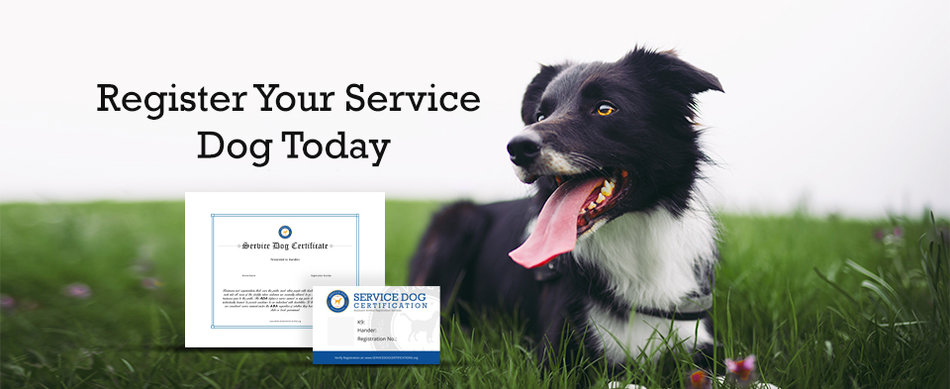
Table of Contents
- What Does a Mobility Service Dog Do?
- Mobility Assistance Tasks
- Emergency Assistance Tasks
- How Big Should a Mobility Service Dog Be?
- How Long Does It Take to Train a Mobility Service Dog?
- Who Can Benefit From a Mobility Service Dog?
What Does a Mobility Service Dog Do?
Mobility service dogs, also known as brace service dogs or Brace and Mobility Support Dogs (BMSD), are trained to help their owner moving around or obtaining items. These assistance animals receive additional training to perform tasks that make the life of individuals with mobility issues easier.
Mobility Assistance Tasks
Mobility service dogs can help to “brace” their owner. Bracing means helping to keep a person from falling or to assist them to sit or stand upright. Other tasks a mobility service dog can do are:
- Opening and closing exit doors and cabinet doors, sometimes by using ropes or special latches.
- Pushing buttons and flipping light switches when needed. For instance, when in an elevator or automated door.
- Fetching, carrying, or placing items down when told, particularly in situations when things are out of reach.
- Assisting a person in a wheelchair.
- Provide physical support by maintaining balance when their owner feels weak, dizzy, or if they are prone to falling.
- Assists their owner to stand up or remain upright by physically bracing them or pushing and pulling them.
- Serve as a counterbalance or assist their owner in walking in a straight line to avoid bumping into things.
A mobility service dog can change the world for a person with mobility issues, enabling them to perform daily living activities.
– ServiceDogCertifications.org
Emergency Assistance Tasks
In cases of emergency or if their owner falls mobility dogs are trained to react in the following ways:
- Bark to notify bystanders or other people in the home of an emergency and the need for assistance.
- Initiates call to 911, opens the door, or barks to alert first responders where their owner is located.
- Retrieve emergency medication.
- Stand over their owner to prevent them from being injured or stepped on.
- Nudge their owner into a recovery or safety position.
- Perform emergency tasks such as removing their owner’s clothing during temperature spikes or warming them during rapid temperature drops.
Finally, as with all dogs, mobility service dogs offer companionship, loyalty, and connection to their owners—which can help lift their owner’s spirits.
How Big Should a Mobility Service Dog Be?
Ideally, an owner shouldn’t place their full weight on their mobility assistance animal. However, because unforeseen events do happen, a service dog should be a larger-statured dog to safely perform their tasks, with both their well-being and their owner’s safety in mind. According to the International Association of Assistance Dog Partners (IAADP), a mobility assistance animal should be at least 22″ tall and weigh at least 55 pounds to assist a child or a petite woman. For average adults, a service dog assisting with mobility should be over 60 pounds.
The size of a mobility service dog ultimately depends on the size and needs of the person they’re working for. For example, a dog required only for retrieval purposes and not for falls assistance can be smaller. Service dogs used for bracing falls, however, may need to be 27 inches or taller, depending on the height of their owner. Ensuring that the dog’s size is compatible with the job required will keep both the dog and the owner safe.
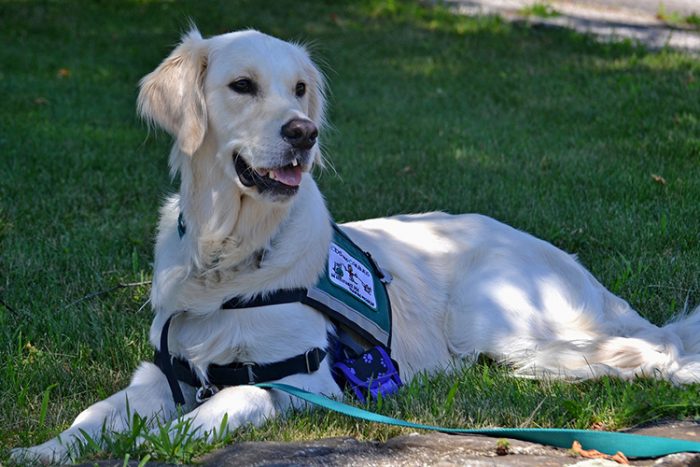
How Long Does It Take to Train a Mobility Service Dog?
Knowing how vital and life-changing the work of a mobility service dog is, it’s no wonder that these working dogs require extensive training. Unfortunately, there is no way to obtain a quality service dog quickly or cheaply. According to IAADP, training a mobility service dog may take a minimum of 120 hours of training. Depending on the skills necessary, service dog training may take at least six months. An additional 30 hours of training in a public setting also helps a mobility service dog execute their skills in a community environment without being intrusive with others.
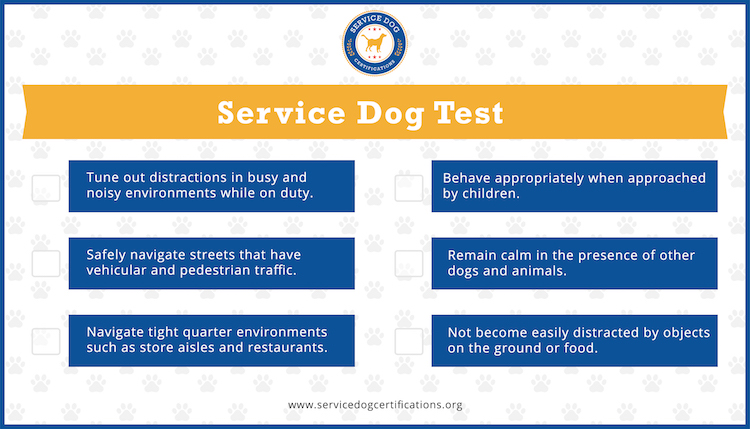
Who Can Benefit From a Mobility Service Dog?
As mobility service dogs have a wide variety of skills, they’re ideal for helping with many disabilities and disorders. The following are examples of a few conditions that can benefit from a mobility service dog:
- Arthritis
- Spinal Cord Injury
- Vertigo
- Migraine
- Visual Impairment
- Brain injury
- Heart Disorders
- Muscular Dystrophy
- Parkinson’s Disease
- Gait Problems
If you or someone you love suffers from any of these conditions, a mobility service dog may be the right choice.
Show everyone your mobility service dog is an important part of your daily life with your Service Dog ID. Get your mobility service dog registered below.
About the Author: The writing team at Service Dog Certifications is made up of folks who really know their stuff when it comes to disability laws and assistance animals. Many of our writers and editors have service dogs themselves and share insights from their own experiences. All of us have a passion for disability rights and animals.
4 comments
Leave a Reply Cancel reply
Latest Posts

Dangerous Materials Hiding in Your Dog Products
Jake’s German Shepherd began developing strange rashes around his collar. Three vet visits later, they figured out the leather was treated with chromium — a chemical that irritates sensitive skin. Jake had no idea his dog’s collar contained industrial chemicals. Most dog owners don’t know what goes into the products they buy. Many companies use […]

Read More

Can You Bring a Service Dog to a Basketball Game?
Yes, you absolutely can bring your service dog to basketball games. Whether you’re heading to your local high school tournament, a packed college rivalry game, or splurging on NBA tickets, the Americans with Disabilities Act protects your right to be accompanied by your service dog anywhere the public can go. When you arrive, venue employees […]

Read More

Best Pet Health Insurance Providers
If you own a pet, you know how important — and expensive — vet care can be. One way to offset those costs is to purchase pet health insurance. Like typical health insurance, pet insurance is available at many price points, and can cover all, most, or only some of your vet-related costs. It can […]

Read More
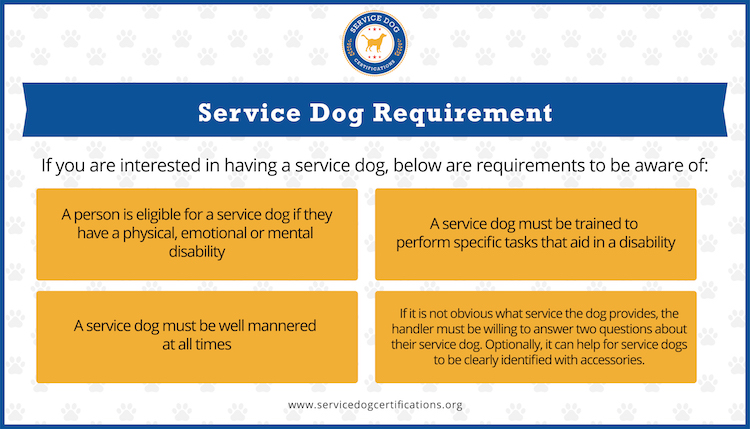

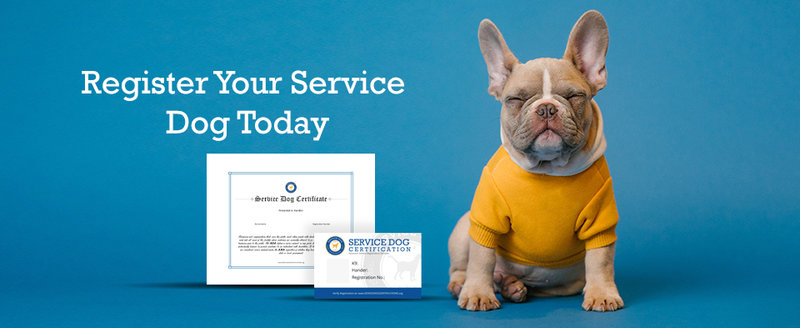

Hello, I have been having vertigo and vestibular migraines for about 7 years now. We recently have rescued a 10 week old Bernie’s mountain dog mix puppy from the shelter. He has a great demeanor and my spouse and I are hoping that we can get help training him to help me with my mobility issues whenever I am experiencing vertigo spells or extended on and off dizzy spells. Things like helping me make my way up and down stairs, navigating to the bathroom, or even helping me get from my classroom to the outside parking lot when an emergency happens. Do you believe this is something we can try to do with our new Pup and do you know of services, classes, or other offerings that could help us train, or give advice on this?
Thank you for taking the time to get back to us.
Unfortunately we don’t provide referrals for training, but we recommend speaking to both your healthcare provider and an experienced service dog trainer. If and when you do qualify as a service dog owner we would love to help you.
It you will need to use him for any wt. bearing, have a vet check him for any issues with hip displasia FIRST
Hi. I’m in NW Indiana, close to Chicago. I am on SSDI for a visual disability. I lost my left eye and have a condition called Charles Bonnet Syndrome. The easiest way to explain it is that it’s the eye version of phantom limb, but instead of feeling an eye that isn’t there, I hallucinate constantly. My brain never recognized the eye loss, so I basically always have distorted vision. Most of the times it’s shapes and colors overlaying my vision, but I do also occasionally see fully formed things. While I know they aren’t real, they can startle me and make me jump away. Because of this, I have severe balance issues and no depth perception at all. I’d like to know how I go about starting the process of getting a mobility support dog. The larger the breed, the better. I need a dog big enough that if I start to fall, I won’t hurt it using it to help, and large enough I can use it to help me get out of the bath tub safely, and things like that. I also need help walking outside my own street, as often I’ll see holes in the ground that aren’t there, and if a dog could lead me, I wouldn’t jump away from things that aren’t really there, as my body reacts before my brain connects that what I’m see isn’t there. Because I’m on SSDI for this, I’m confident my neurologist or GP would be on board. I just have no idea where on earth to start. I don’t think I need a seeing eye dog, as I always have a general idea of where I’m going, but I do need help preventing falls and navigating aisles at stores, narrow ways, ground that isn’t completely flat, etc… Outside of a large breed, being cat friendly is a must. Does anyone know how and where I get started with this process?